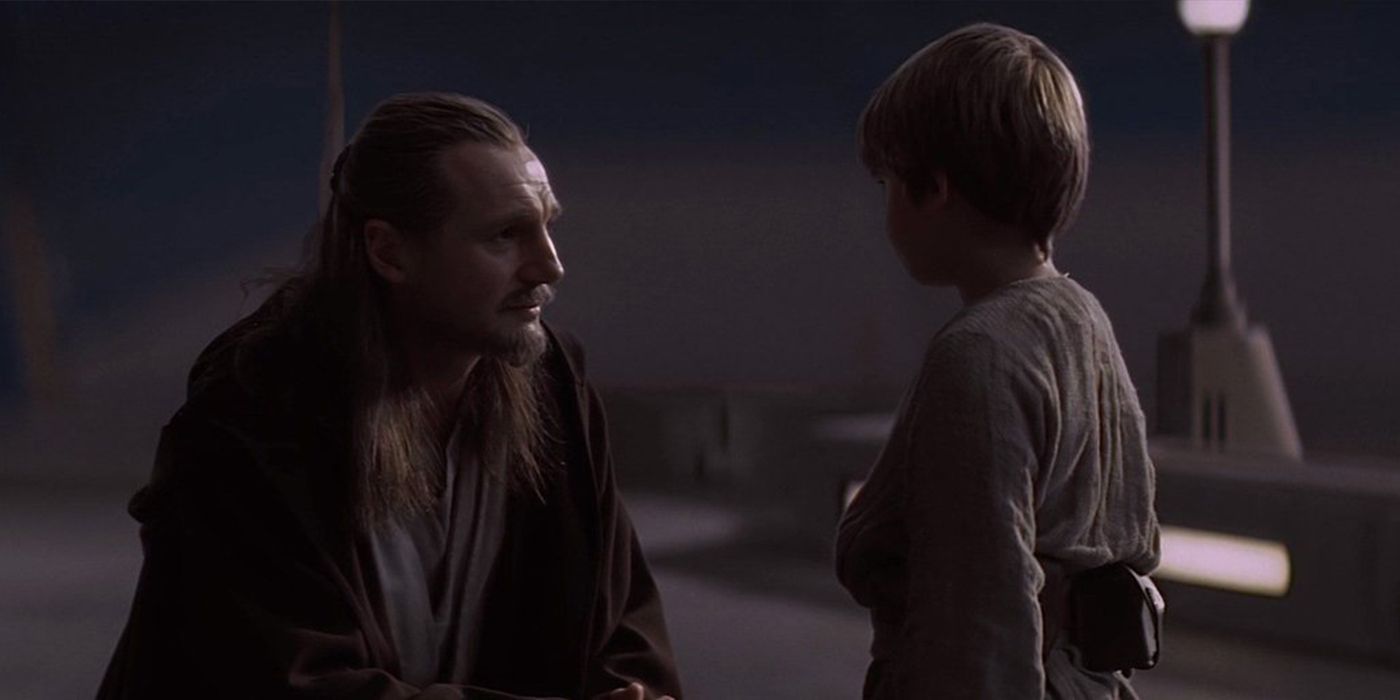In the original Star Wars trilogy, much of the Force was kept shrouded in mystery. And while that remains the case, far more is known about it than before, especially since the introduction of midi-chlorians in The Phantom Menace. Some fans have a distaste for the concept, believing it removes the mystical nature of the Force. However, that didn't prevent director George Lucas from mentioning the mysterious life forms numerous times. That said, midi-chlorians are never fully explained, so what exactly are they?
A common misconception is that midi-chlorians and the Force are one and the same. That is because, in Star Wars: A New Hope, Obi-Wan Kenobi says, "The Force is what gives a Jedi his power; it's an energy field created by all living things." And then, in The Phantom Menace, Qui-Gon Jinn explains, "Midi-chlorians are a microscopic life form that resides within all living cells" -- which sounds awfully close to Obi-Wan's description.
The Force and Midi-Chlorians Are Related, But Not the Same
Yet, the Force and midi-chlorians are separate concepts that happen to communicate with each other. The Force is still an unknown energy that seemingly has a will of its own and allows for the use of typical Force powers. By contrast, midi-chlorians are simply life forms that allow their hosts to connect to this energy. They live in the cells of every living being, creating a symbiotic relationship with their hosts, and providing the gift of Force sensitivity. It also means that the more midi-chlorians someone has in their cells, the stronger their connection is to the Force.
An average midi-chlorians count hasn't been provided in modern Star Wars canon. But in Legends, the average person had around 2,500 per cell, whereas Jedi would typically range around 7,000 to 15,000. This is still assumed to be the case by most fans, and it makes sense when compared to Anakin Skywalker's power and midi-chlorian count. After Qui-Gon gives him a blood test, he detects over 20,000 per cell. "Even Master Yoda doesn't have a midi-chlorian count that high," Qui-Gon remarks.
Qui-Gon had an obsession with understanding the Force, which led to his knowledge of midi-chlorians. He believed they "continually speak to us, telling us the will of the Force." It was through that knowledge he became the first Jedi to retain consciousness after death. In Star Wars: The Clone Wars, his ghostly voice speaks to Yoda, saying that, through the midi-chlorians, he learned the Force is made up of two parts, the Living Force and the Cosmic Force.
Midi-Chlorians Allow the Force to Commune With Living Things
While the concept can seem complicated, Qui-Gon explains, "All energy from the Living Force, from all things that have ever lived, feeds into the Cosmic Force. Binding everything and communicating to us through the midi-chlorians. Because of this, I can speak to you now."
The key word here is "binding," which suggests that because everything is connected, Force ghosts are able to find a pathway from the Cosmic Force to midi-chlorians and then are able to shape them into a ghostly image and communicate with living beings.
And so to summarize in simpler terms, midi-chlorians are life forms that the Force can communicate through, and they reside in all living things. This means that everything has at least some connection to the Force, but the more midi-chlorians that live in the cells, the more sensitive it is. And with a greater understanding of these microscopic life forms, Force-sensitive people are able to maintain a connection with them even after death.



